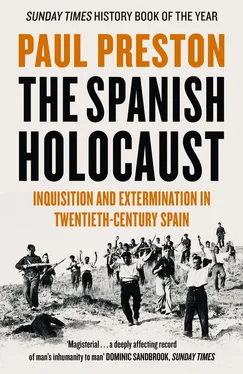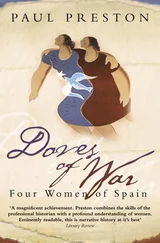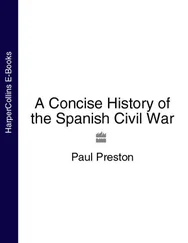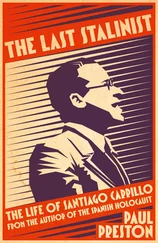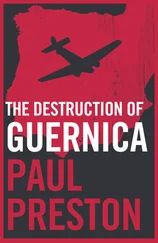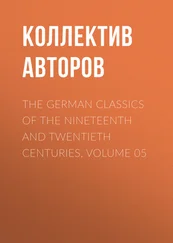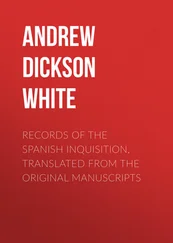In late 1934, the issue of what to do about the 34,000 yunteros settled in November 1932 became urgent. The CEDA now had the opportunity to put into practice its much vaunted aim of combating revolution with social reform. As skilled farmers, with their own tools and animals, the yunteros of Extremadura were potential recruits for the social Catholic movement. They could easily have been converted into share-cropping smallholders. 18However, Giménez Fernández encountered the local right demanding their immediate eviction. 19Without attacking the agrarian problem at its root, the measures he proposed between November 1934 and March 1935 did attempt to mitigate some of its more appalling consequences. He met only the hostility of the extreme right and, in his own party, the CEDA, little solidarity and much vicious personal abuse. The bitter determination of landowners to bury his Law for the Protection of Yunteros and Small Farmers was revealed when he was visited on 16 October 1934 by a group of landowners from Cáceres accompanied by the three CEDA and four Radical deputies for the province and by Adolfo Rodríguez Jurado, CEDA deputy for Madrid and president of the landowners’ pressure group, the Agrupación Nacional de Propietarios de Fincas Rústicas. The ferocity of their objections was reflected in Giménez Fernández’s diary entry that more than one of them was a ‘fascist decided on sabotage’. 20
In January 1935, Giménez Fernández’s Law on Access to Ownership offered tenants the chance to buy land they had worked for twelve years. Mild as it was, the project provoked a parliamentary coalition of ultra-rightist deputies, led by the Carlist José María Lamamié de Clairac (Salamanca) and four CEDA deputies, Mateo Azpeitia Esteban (Zaragoza province), Cándido Casanueva y Gorjón (Salamanca), Luis Alarcón de la Lastra (Seville province) and, most ferociously of all, Rodríguez Jurado. They were virulent in their hostility to the idea of peasants being given access to property. 21
Luis Alarcón de la Lastra was an artillery officer and Africanista who had left the army rather than take the oath of loyalty to the Republic. He was also an aristocrat, holding the titles of Conde de Gálvez and Marqués de Rende, and owned considerable property around Carmona, the area of Seville province with one of the greatest concentrations of large estates. He had become a CEDA deputy for Seville in 1933 but failed to gain a seat in the February 1936 elections. He would rejoin the army at the beginning of the Spanish Civil War and serve in Yagüe’s African columns commanding the artillery that bombarded numerous towns. By 1938, he was commander of the artillery of the Moroccan Army Corps. At the end of March 1939, Franco rewarded him by naming him Civil Governor of Madrid and five months later Minister of Industry and Commerce. 22
Now, in session after session in the Cortes, Alarcón, Lamamié and the CEDA ultras stripped away the progressive features of Giménez Fernández’s law on rural leases and added clauses that permitted a spate of evictions. Gil Robles stated that only concessions made in a Christian spirit could prevent the revolution, yet stood back and watched his Minister being called a ‘white bolshevik’ and ‘a Marxist in disguise’. Moreover, Gil Robles placed Giménez Fernández’s fiercest enemies on the parliamentary committee examining the drafts of his laws. Lamamié de Clairac showed just how far his Catholic faith went when he declared that ‘if the Minister of Agriculture goes on quoting Papal Encyclicals in support of his projects, I can assure him that we will end up becoming Greek orthodox’. 23When he next provoked a cabinet crisis, Gil Robles quietly dropped Giménez Fernández.
On 3 July 1935, Giménez Fernández’s successor, Nicasio Velayos Velayos, a conservative member of the Agrarian Party from Ávila, presented what came to be known as the ‘agrarian counter-reform’. It was so reactionary that it was denounced by José Antonio Primo de Rivera as well as by various Left Republicans and Radicals. Its most dramatic change was to drop the Inventory of Expropriable Property. This permitted landowners to avoid expropriation by putting their properties in other names. Henceforth, only those who wanted their property compulsorily purchased had to undergo expropriation. Moreover, compensation would be decided case by case by tribunals consisting of landowners, who would ensure that it would be at full market value. 24In Extremadura, the local landowners began to evict the yunteros. In the village of Fregenal de la Sierra in Badajoz, one landowner alone evicted twenty families. 25
The consequent level of social tension in Badajoz was starkly revealed on 10 June 1935 when the twenty-six-year-old Socialist deputy for the province, Pedro Rubio Heredia, was shot dead in a restaurant by Regino Valencia, who worked for Salazar Alonso. It will be recalled that Regino Valencia had carried out the ‘inspection’ which led to the removal of José González Barrero as Mayor of Zafra. Rubio’s funeral was attended by thousands of members of the FNTT. At Valencia’s trial, on 27 June, he was defended by Manuel Baca Mateos, a CEDA deputy for Seville, who claimed that the death had come about as a result of a fight. The Socialist Juan-Simeón Vidarte, acting for the victim’s family, proved to the satisfaction of the court that the attack had been unprovoked. Valencia was sentenced to twelve years and a day in prison. He then appealed to the Supreme Court, where he was defended by Rafael Salazar Alonso in person. Vidarte wrote later: ‘knowing as I and the entire province did, that he [Salazar Alonso] was behind the murder, this hard-faced cheek shocked and disgusted me’. At the unsuccessful appeal at the end of December 1935, there was uproar when Vidarte said that Salazar Alonso should have been wearing not lawyer’s robes but convict’s overalls. 26
Despite being made Mayor of Madrid, Salazar Alonso’s political fortunes had plummeted since his removal from the Ministry of the Interior at the beginning of October 1934. Aware that the inclusion of three CEDA ministers in his cabinet would provoke fury on the left, Lerroux felt that he could not keep Salazar Alonso on. It was a gesture to secure President Alcalá Zamora’s approval for the new cabinet. 27In the parliamentary debate on the revolutionary events in Asturias and Catalonia and their subsequent repression, the ex-Prime Minister Ricardo Samper declared that responsibility for what had happened lay with Salazar Alonso. Utterly mortified, Salazar Alonso got up and walked out of the Cortes. 28
Given that both in his private letters to Amparo and in his memoirs, Salazar Alonso boasted of provoking the workers’ uprising, his distress can have derived only from the fact that all had not turned out as well as he had hoped. The post-October repression brought a semblance of social peace, but violence was not far from the surface. The south was badly hit by drought in 1935, unemployment rose to more than 40 per cent in some places and beggars thronged the streets of the towns. The hungry agricultural labourers and the well-to-do rural middle and upper classes regarded each other with fear and resentment. The right-wing campaign for the elections of February 1936 prophesied that a left-wing victory would mean ‘uncontrolled looting and the common ownership of women’. Even without such apocalyptic provocation, natural disaster intensified social tension. After the prolonged drought of 1935, early 1936 brought fierce rainstorms that ruined the olive harvest and damaged wheat and barley crops. Across Andalusia and Extremadura, during the election campaign, the owners offered food and jobs to those who would vote for the right. To refuse could mean a beating or loss of work. In both urban and rural areas of unemployment, the local branches of Acción Popular began to open soup-kitchens and to distribute blankets to the poor. In many places, the right set out to buy votes. 29
Читать дальше
